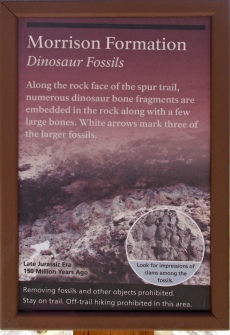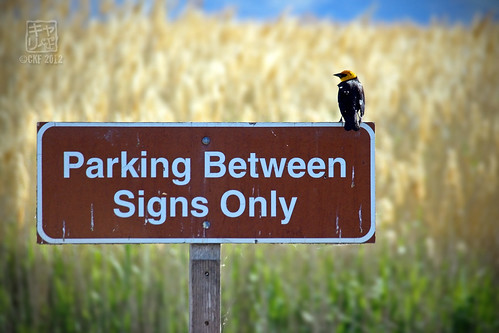This past weekend, Hubby and I took a short yet fascinating road trip to Dinosaur National Monument (DNM), located on the border between northeast Utah, USA and northwest Colorado, USA. DNM is the only national park area set up to protect a historic dinosaur quarry. It is one of the world’s best windows into the late Jurassic period and is home to an amazing display of fossils from this era. The vast diversity of plant and animal fossils found there helps reveal its ancient environment.
The fossil beds in this area were discovered in 1909 by Paleontologist Earl Douglass, from Pittsburgh, Pennsylvania USA, when he found eight dinosaur tailbones protruding from a sandstone hill. This find turned out to be part of the most complete Apatosaurus skeleton ever discovered. Douglass was working for the Carnegie Museum at the time, and established a formal digsite here known as the Carnegie Quarry.
From 1909 to 1924, field crews excavated and shipped fossils to museums, including the Smithsonian Institution and the University of Utah. The first skeleton, and first specimen found at the quarry, was sent to Pittsburgh (my previous home) and mounted at the Carnegie Museum.
In 1915, the quarry site was declared a national monument to protect and conserve its world-class fossil bones. Originally 80-acres, the monument was expanded to over 200,000 acres in 1938 to protect the spectacular canyons and beauty of the Green and Yampa rivers.
This image below shows the original size of the Carnegie Quarry, and what now exists of the quarry, in red. This red area is what you can view at DNM in the Quarry Exhibit Hall.

The initial quarry was formed as a result of a “log jam” of dinosaurs that were killed by long droughts and returning extensive rains and floods. The resulting fast flowing river swept carcasses and bones downstream along the river bottom where they began to pile and be covered by sand and mud.
Fossils from the Carnegie Quarry have been collected from almost 400 different dinosaurs. Visitors can view a wall at the Quarry Exhibit Hall of the remaining 1,500 (approx.) fossil bones from 100 individuals dating back about 149 million years. Earl Douglass was one of the first to suggest leaving some of the bones in place for public viewing. DNM was the first place to do this and other sites have followed.
We were told that the skull in the very first photo above is the most photographed fossil at the quarry. The following is a photo of the quarry wall inside the exhibit hall. In the upper middle part of the photo, I’ve drawn an arrow to show where this skull is located. (You can see a small protrusion at the end of the arrow point.)
Here is another skull with the spine directly to the left of it. This is a camarasaurus, which is the most common dinosaur at the quarry:

Camarasaurus skull (circled) and spine
The original Quarry Exhibit Hall, built in 1958 to house the quarry was closed in July 2006 because it was at risk of collapsing due to the expanding and contracting of the soil it was built on. The Quarry Exhibit Hall underwent a major rehabilitation and was reopened on October 4, 2011:

Quarry Exhibit Hall at Dinosaur National Monument

Allosaurus skeleton. Original skull is seen in the lower left side of the photo.
This large, original Allosaurus skull inside the exhibit hall is one of the best-preserved skulls ever discovered. It is uncrushed and only minimally distorted:

Allosaurus skull fossil
Near the quarry, visitors can take a short hike along the Fossil Discovery Trail and see more fossils of bone fragments, 100 million year old fish scales, and small clams. Further away from the quarry, visitors can go on other hiking trails and scenic drives, take a river rafting trip, see dramatic river canyons, look for petroglyphs, etc.
The 23 rock layers and unique rock formations in this monument area provide a geologic record of earth’s history spanning over one billion years. Fossils were deposited in many different environments, which allow scientists to reconstruct how the area was 150 million years ago. Evidence, including Native American rock art (petroglyphs) show that the area has been inhabited off and on for thousands of years.
According to information at the visitors center, the monument has the “most complete geological records of any National Park Service site…It’s rock layers preserve ecosystems from ancient seas, to dinosaurs roaming river plains, to Sahara-like deserts with tiny mammals.” Fascinating!

Baseball cap placed next to a dinosaur fossil – to show perspective
…
I am glad for the preservation of such historical significance and scenic beauty for present and future generations.
…
This is for the letter “F” Story Challenge by Frizztext, to share a short story or reflection, even an aphorism using a word tagged with each letter of the alphabet.

Continue reading →







































